South Africa is a sightseer's paradise, with plenty to see and do no matter the traveller's interests, time frame, age, or inclination.There is natural splendour in abundance, including the beautiful beaches and iconic Table Mountain of Cape Town, the magnificent Drakensberg Mountains, the Blyde River Canyon, the stunning scenery of the coastal Garden Route, the pristine coastline of the Transkei, and the sweeping vistas of the Highveld. Of course, the animals of South Africa, especially the Big Five, are a big draw for tourists and game safaris are a very popular diversion. The Kruger National Park is the country's most famous wildlife reserve and a must for many visitors.South Africa has a complicated and dramatic history and the legacy of the pioneer wars, slavery, colonialism, the Boer War and Apartheid is still strongly felt. There is no shortage of interesting historical sightseeing, with sites like Robben Island - where Mandela was imprisoned - and the battlefields of the Boer War attracting many visitors. The country has many quaint historical towns, like Franschoek in the Cape Winelands, and Grahamstown in the 'frontier country' of the Eastern Cape. South Africa also has its share of museums and galleries, and the Apartheid Museum in Johannesburg is particularly noteworthy.The country is easy to get around with competitive low-cost carriers, long distance buses, good value car hire and the best roads in Africa. Road tripping is a wonderful way to experience the hugely diverse landscapes and cultures of this vast country.South Africa is one of the few global destinations that can offer the complete holiday experience, with a huge variety of world-class attractions and compelling experiences, and incredible value for money to boot.
Addo Elephant Park is the most popular game reserve in the Port Elizabeth area, and is a 45-minute drive from the city. The park is situated in the ruggedly beautiful Eastern Cape region, and offers an authentic safari experience. Addo was founded in 1931 to save the area's remaining 11 indigenous elephants, and has been a remarkable success since then. It is now the third largest game reserve in South Africa, and one of the most popular with tourists and locals. The elephants are drawn to watering holes at certain times and sightings are virtually guaranteed all year round. There are other animals in the park too, including lion, leopard, black rhino, buffalo, zebra, warthog, hyena, and several types of buck. Guided game drives are available or visitors can do a self-drive tour using the map issued at the entrance. The roads are in good condition.A variety of accommodation is available and there is a restaurant and picnic site. Horse riding and walking safaris are also available. Addo is a great destination year-round but the best months for game viewing are April and May, when it is dry and warm.
Website : www.sanparks.org/parks/addo
The spectacular vista of the Blyde River Canyon is part of the scenically breath-taking Panorama Route, where sheer cliffs drop into a bush-covered valley. It's worth covering the route as a self-drive trip from Nelspruit, or on a bus tour. Other sights on the route include a trio of green-clad peaks set in the canyon called the Three Rondavels, and the Bourke's Luck Potholes. The latter are huge holes in the mountainside formed by grinding sand. The Blyde River Canyon is the biggest green canyon in the world, and the third largest canyon on earth. Only the USA's Grand Canyon and the Fish River Canyon in Namibia are bigger. The river itself offers some challenging white-water rafting, and one of the best ways to experience the canyon is to paddle the river. A five-day hiking trail winds along the canyon, through the Blyde River Canyon Nature Reserve. It is one of the most rewarding walking trails in the country, if not the world. Visitors can also enjoy shorter walking trails, game safaris, horse-riding trails, mountain-biking trips, and abseiling.All of these activities are offered by the nature reserve. Lastly, it's worth mentioning that there is a variety of accommodation in the reserve.
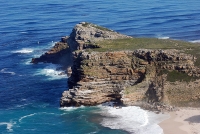
Most Cape Town visitors are keen to make the short, 40 mile (65km) daytrip from the city centre to the Cape of Good Hope Nature Reserve. The land at first appears bleak, but visitors will soon discover a region rich in floral diversity. They will also stand atop the towering promontory at the most southerly point of the Cape Peninsula. Those who wish to venture to the most southerly point of Africa will have to journey further to Cape Agulhas. Visitors can reach the viewpoint and lighthouse via a funicular, and watch thundering waves crash at the base of the cliffs below. Bird lovers and botany enthusiasts will enjoy exploring the reserve itself. There are a number of beautiful walking trails, including the shipwreck trail, which takes visitors to a few of the 26 recorded shipwrecks around Cape Point. There are also some great beaches and dive sites. The restaurant at Cape Point has a terrace offering spectacular views.
Website : www.capepoint.co.za
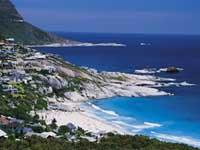
Cape Town has some truly gorgeous beaches, but the most glamorous are on the Atlantic Ocean, where the water is unbelievably cold. Even the locals tend to keep their swims short. The most popular choices include Camps Bay Beach. Locals and tourists pack its long, wide stretch of silver sand and enjoy the trendy bars and restaurants nearby. Another favourite is Clifton, where four beaches are situated beneath the exclusive houses and apartments set into the cliff. The beaches are named First, Second, Third and Fourth Beach. First Beach is the largest and most popular among families, while Second Beach is preferred by the hip crowd. Third and Fourth Beach are usually frequented by locals. The small suburb of Llandudno lies 15 minutes south of Camps Bay, and is home to one of the most scenic beaches in South Africa. It's popular for sundowners on the rocks or long days in the sun.Despite its popularity, Llandudno is seldom too crowded. This is partly because there are no bars or restaurants there. The nearest is in Hout Bay, which is another 10 minutes south. Hout Bay's long beach is popular with families and walkers but is not as stunning as its neighbours. False Bay is also blessed with lovely beaches and these tend to be more family-friendly and less trendy. The most popular beach for beginner surfers in Cape Town is Muizenberg, which has plenty of surf schools. The Muizenberg and Fish Hoek beaches of False Bay are also wonderful for swimming, as the water in False Bay is much warmer than on the Atlantic side. For long walks and horse riding, the lovely Noordhoek beach is ideal.To see Cape Town's penguin colony, tourists should visit the picturesque Boulders Beach in Simonstown, where the loveable birds suntan and swim. Sharks are a problem in Cape Town, particularly in False Bay, and many beaches have shark spotters on duty. Visitors should pay close attention to the flags on the beach, as they signal whether it is safe to swim. A siren will go off to warn swimmers in the water if a shark is spotted nearby.
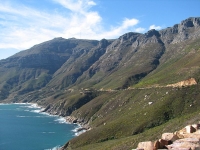
Chapman's Peak Drive is one of the most spectacular coastal roads in South Africa and the world. It links the seaside community of Hout Bay to the Noordhoek Valley along the Atlantic Coast, and offers breath-taking views from along the narrow, winding road blasted into the cliffs. Started in 1915, the six-mile (9km) route took about seven years to complete and was built as a shorter, alternative route between Cape Town central and the South Peninsula. Many visitors use this scenic route to reach Cape Point Nature Reserve, situated at the tip of the Peninsula. But for many Capetonians, it simply comprises a breathtakingly beautiful commute to work. There are a number of gorgeous picnic sites and viewpoints along the route and it is very popular with cyclists. Chapman's Peak Drive is also the ideal vantage point for whale watching, the peak whale season being mid-August to mid-November. Hiking up Chapman's Peak and through Silvermine Nature Reserve and the Cape Peninsula National Park offers spectacular views over the South Peninsula.With sheer cliffs below, soaring mountains above, and the ocean stretching to the horizon, this dramatic stretch of road is a must-see for tourists in Cape Town.
Website : www.chapmanspeakdrive.co.za
Opening times : Open 24 hours; the road closes occasionally due to heavy rainfall, or rockfalls
Admission : Chapmans Peak Drive is operated as a toll-road. Light motor vehicles cost about ZAR 45.
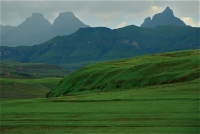
The jagged peaks of the Drakensberg (Dragon Mountains) tower over KwaZulu Natal's eastern border, providing a paradise for outdoor enthusiasts. The Drakensberg is the highest mountain range in southern Africa and abounds with hiking trails, climbing routes, 4x4 trails, pony treks and adventure pursuits, all accessible from numerous resorts in the lower reaches. Some of the more popular resorts are Champagne Castle, Cathkin Peak, and Cathedral Peak, while Giant's Castle and its game reserve are famed for the more than 500 rock paintings left behind by the San people on cave walls. Eagles soar around the peaks in the Royal Natal National Park in the north, where the dramatic scenery includes the Amphitheatre, a five-mile long (8km) curved basalt wall. The region is largely untamed and criss-crossed by lengths of rugged dirt roads. The only road that breaches the mountain range and crosses the border to Lesotho is the hair-raising Sani Pass, which is topped by the highest pub in Africa.Adventure activities available in this stunningly beautiful area include sheer rock or ice-climbing, abseiling, and white -water rafting. It is also possible to take helicopter rides to see the dramatic scenery from above.
Website : www.drakensberg.kzn.org.za
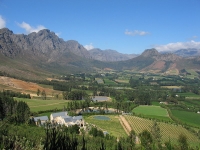
Fleeing religious persecution in France in the 1700s, more than 200 French Huguenots arrived in the Cape and were settled in the valley that soon became known as Franschhoek (French Corner), which is today situated in the heart of the Cape Winelands region. Many of the settlers were experienced wine producers and they soon recognised the potential of the region for wine and fruit production, establishing wine estates throughout the spectacular Franschhoek Valley in surroundings of magnificent scenery and towering mountains. Today the town is famous not only for its splendid wines and beautiful vistas, but also as the gourmet capital of South Africa, boasting the highest number of award-winning eateries in the country. Restaurants such as Le Quartier Français, La Petite Ferme, Haute Cabriere, and Boschendal are among those that are internationally acclaimed. The Huguenots also left behind a rich legacy of arts, architecture, and hospitality, which are still visible today. Franschhoek hosts a number of wonderful festivals, including a book fair, a big celebration for Bastille Day, and champagne and wine tasting festivals.
Website : www.franschhoek.org.za
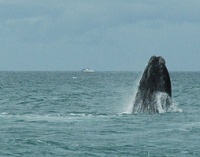
Locals and international tourists alike travel south of Cape Town to Hermanus. The charming seaside town is about a two-hour drive outside the Mother City, and is known for its whale watching, as Southern Right Whales migrate through the area to nearby Walker Bay. Visitors are almost guaranteed a sighting of these gentle giants from the steep cliffs of Hermanus between September and October, and the Two Oceans Whale Festival draws big crowds over this period. There are also opportunities to view other wildlife, including dolphins, seals, penguins, and Great White Sharks. The town itself offers many other activities. These include browsing shops and restaurants in the quaint downtown area to venturing further afield to wine farms and beaches and neighbouring towns like Stanford, Gansbaai, and Caledon. Active pursuits include horseback riding, quad biking, hiking, sandboarding, mountain biking, kayaking, and zip lining. Strolling along the cliff walk in Hermanus is a must for visitors, even if there are no whales in the bay. Book fanatics should seek out the wonderful second-hand book store in Hermanus called Hemingways.
Website : www.hermanus.co.za
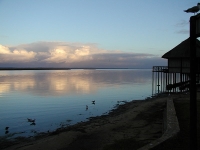
iSimangaliso Wetland Park is the largest and most exciting in a string of game parks and nature reserves in KwaZulu-Natal's far north. Many still know it by its former name, St Lucia Wetland Park. Dominated by the fascinating St Lucia estuary and lake system, the park includes eight distinct ecosystems, which vary from dry thorn scrub to tropical forest. Some of the world's highest dunes border them. The park also encloses three major lake systems, beautiful beaches, tropical reefs, Africa's largest estuarine system, and most of South Africa's remaining swamp forests. Big-Five game viewing is on offer too. Visitors should note that this is the only place in the world where they will see hippos, crocodiles and sharks co-habiting the same lagoon. There are comfortable rest camps and some very picturesque campsites in the park. The Wetland Park was declared South Africa's first UNESCO World Heritage Site in recognition of its natural beauty, unusual ecosystems, and the 700-year-old fishing traditions of local inhabitants.As Nelson Mandela said, it must be the only place on earth where the oldest land mammal (the rhinoceros) and the world's biggest terrestrial mammal (the elephant) share an ecosystem with the world's oldest existing fish (the coelacanth) and the world's biggest marine mammal (the whale).
Website : isimangaliso.com
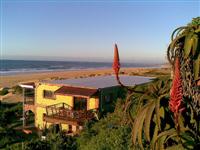
Known colloquially as J-Bay, the surfing paradise of Jeffrey's Bay is a short drive west of Port Elizabeth. This determinedly laid-back seaside town is most famous for Supertubes, one of the best right-hand point breaks in the world. Many consider it South Africa's perfect wave. The town lives and breathes surfing and has several glorious surf spots that are gentler and more accommodating than the celebrated Supertubes. The waters of J-Bay are also frequented by dolphins, seals, and whales, and surfers are often lucky enough to mingle with these sea creatures. J-Bay has many surf stores, including factory outlets selling cheap, branded clothes, and surf gear. The long stretches of picturesque sandy beach surrounding the town and are renowned for their shells and bright orange aloes. Rivers and nature reserves border the town on both sides. The region has a wide range of accommodation, including luxury game farms just out of town and cheap backpackers for budget travellers. The town itself is not particularly attractive but the natural setting more than compensates.Although J-Bay is a famously friendly place, surfers should note that localism can be a problem in the water. Visitors should be friendly and respectful with local surfers, and should abide by proper surfing etiquette.
Website : www.jeffreysbaytourism.org
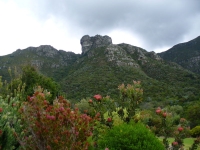
The magnificent Kirstenbosch National Botanical Gardens lie just south of the city centre and cover a huge expanse of the rugged southwestern slopes of the Table Mountain Range. Kirstenbosch was bequeathed to the nation by mining magnate Cecil Rhodes in 1895, and today contains a nursery, a research unit, a botanical library and more than 22,000 plants. Numerous paths meander through the gardens, including a Braille route for the blind. Nature lovers should note that the walks are full of lush shrubs and fynbos, the Cape's indigenous floral heritage. The gardens are indeed a natural wonderland, where visitors will find lots of space for picnics. Several incredible hikes can be started from the gardens, including the formidable Skeleton Gorge, and Nursery Ravine, which wind steeply up the mountain and generally take between four and six hours. If these difficult hikes sound a little frightening, some far gentler and shorter trails wind through the gardens. Visitors will find a tea room, two restaurants, and a coffee bar on site.In summertime, the delightful setting becomes the venue for Sunday evening open-air concerts, when picnickers relax on the lawns, sipping wine, and enjoying the sunset entertainment. There are also outdoor movie screenings in summer.
Address : Rhodes Drive, Newlands
Website : www.sanbi.org/gardens/kirstenbosch
Opening times : Daily 8am to 6pm (April to August); 8am to 7pm (September to March); Conservatory 9am to 5pm
Admission : R60 (adults), R15 (children 6-18). Concessions available. Concert fees are applicable on Sunday afternoons during the Summer Sunset Concert series
The Kruger National Park is South Africa's oldest, largest and best-known wildlife conservation area, home to a huge variety of wildlife and most famous for its 'Big Five' viewing opportunities. Visitors have an excellent chance of seeing lion, elephant, leopard, buffalo and rhino among the enormous variety of wildlife, including over 140 species of mammals, 500 species of birds, reptiles and amphibians. Situated on South Africa's northeastern border, Kruger is a primary destination for international tourists, and is visited by more than half a million local and international visitors every year who are attracted by the different safari options as well as the park's excellent range of visitor facilities and choice of accommodation, from luxurious game lodges to cottages and camping. Because of the park's popularity, it is advisable to book far ahead for both day visits and extended stays. Bookings can be made through the park's website.Kruger is a year-round destination, but the game viewing is at its best in the winter months, between June and August. The park is more lush and the landscapes more beautiful in summer but it gets very hot and the animals are more difficult to spot. The Kruger Park is generally very safe and tourists should be in no danger if they abide by the rules and treat the animals with respect; these are, after all, wild animals in their natural environment and some of them can be dangerous if they feel threatened.
Website : www.sanparks.org/parks/kruger
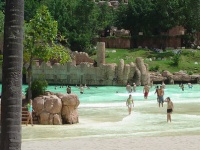
Situated in the Bojanala region of the North West Province, the 'Las Vegas of South Africa' is one of the largest entertainment centres for adults in the world. Visitors can look forward to casinos, golf courses, live shows, and the architectural wonder of the Lost City. The vast resort complex is one of South Africa's top attractions for gambling, entertainment, and opulence. Guests will find a luxurious palace at its centre, where frescoes, palm fronds, mosaics and elephant tusks complement the resort's life-sized model animals. Lakes, forests, and a tropical beach surround the Lost City. Along with a variety of water sports, guests can enjoy The Valley of the Waves, which is the most advanced waterpark in the country. Among other things, it has a wave machine capable of generating seven-foot (2m) waves. The waterpark's numerous slides and wonderful Lazy River are fabulous fun for the whole family. Buying a day pass for the Lost City waterpark allows visitors to explore the extensive grounds and access the casino.There are a number of Sun International hotels on the property and the resort complex also borders on the Pilanesberg National Park. Home to the Big Five, it is a popular game-viewing destination.
Website : www.suninternational.com
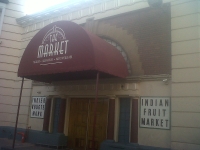
Located in the city centre, this complex of buildings has been upgraded and restored as part of the city fathers' urban renewal policy and includes several attractions. For instance, the Market Theatre and Museum Africa are housed in a Victorian building in Bree Street - originally Johannesburg's fresh produce market. The Museum of Africa is particularly worth a visit, as its exhibits tell the city's story from its beginnings to the present day. The display includes an interesting section about the Treason Trial of the 1950s, in which Nelson Mandela and other activists were accused of plotting against the state. The same building houses a photography museum and the Museum of South African Rock Art. At its eastern end is the Market Theatre, famed for being the venue for many protest theatre productions in the apartheid era. Also in the area is the South African Breweries Centre, which offers a tour detailing brewing history through some reconstructed gold-rush pubs and shebeens (township bars). Along Jeppe Street is the Oriental Plaza, the commercial centre for the Indian community.Newtown is also renowned for its nightlife, with wonderful restaurants, jazz establishments, and clubs that stay open until the early hours.
Website : www.newtown.co.za
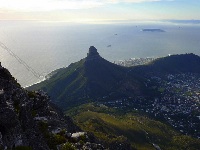
Robben Island is seven miles (11km) from Cape Town, and is easily seen from the shore. For nearly 400 years, this tiny rocky island was utilised as a place of banishment, exile, isolation, and imprisonment for numerous categories of people ostracised by society, ranging from political protesters to lepers. During the years of Apartheid, Robben Island became synonymous with institutional brutality as numerous freedom fighters, including the island's most famous resident, Nelson Mandela, were imprisoned here for more than a quarter of a century. Robben Island is now a museum, symbolising the liberation and triumph of the human spirit. Regular island tours are conducted and last for around three and a half hours. The tours are guided by former prisoners and include a visit to the maximum-security prison on the island, where an estimated 3,000 freedom fighters were incarcerated between 1962 and 1991. The island is also interesting in other ways. For instance, it is a magnet for shipwrecks, with at least 68 recorded cases across its rocky coastline.The boat trip across the bay can be really fun in itself, and some wonderful views of the city and Table Mountain are gained from the ferry ride and the island itself.
Website : www.robben-island.org.za
Transport : Boat from the Nelson Mandela Robben Island Gateway in the clock tower precinct at the Victoria and Alfred Waterfront in Cape Town. Book in advance
Opening times : Boats leave roughly every two hours between 9am and 3pm (weather dependent).
Admission : Tours are R300 (adults), R160 (children under 18), which includes the return boat trip across Table Bay.
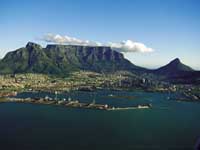
Cape Town's most popular tourist attraction is also its most famous physical feature. The flat-topped mountain stands as a sentinel over the city, and has been proclaimed a nature reserve, thereby protecting its diverse floral species. Some are unique to its slopes. The views of the city and coastline from the top of the mountain are quite spectacular in all directions. A Swiss-built rotating cable car carries visitors smoothly up the mountain and back. The mountaintop is equipped with a restaurant and small gift shop, as well as numerous pathways and vantage points. It is possible to climb the mountain via different routes, but inexperienced hikers should take care because Cape Town is prone to sudden weather changes. The walk up can take a few hours, depending on the route and level of fitness. Route maps can be bought at the cable-car station. It is always best to check the website or call the weatherline to see if the cable car is in operation. Hikers should travel in groups, as there have been reports of robberies on the trails.Tickets for the cable car can be booked online via the official website. They are marginally cheaper online and allow travellers to skip the sometimes long queues at the ticket kiosk. Ascending Table Mountain is an absolute must for visitors to Cape Town.
Address : Tafelberg Road
Website : www.tablemountain.net
Transport : Bus to Kloof Nek from Adderley Street and a 1.5km walk up the hill; minibus taxi from the Parade; Riki taxi; or as part of the Cape Town Hop-On Hop-Off bus tour
Opening times : Cable car operates daily (weather permitting) every 10-15 minutes from 8am to 8pm (November); 8am to 10pm (December to January); 8am to 8:30pm (February); 8am to 7:30pm (March); 8am to 6:30pm (April); 8:30am to 6pm (May to mid-September); 8:30am to 7pm (16 September to October). Closed for annual maintenance for about three weeks in July and August
Admission : Cable car: R225 return, R135 one way (adults); R125 return, R65 one way (children under 18). Other concessions available.
Situated near Gold Reef City, the Apartheid Museum chronicles South Africa's tragic and shameful history of black oppression. On display are relics of the apartheid system, an abhorrent regime which denied non-whites basic freedoms and an equal life in the country. Visitors often describe the experience of the Apartheid Museum as harrowing. At the same time, the story of the struggle over adversity is inspirational and serves as an integral and important part of the new South African narrative and its reflections on history. To give some idea of the everyday realities of racial classification, visitors arbitrarily are classified as either 'white' or 'non-white' upon arrival and can only enter through their designated entrance. Due to graphic content, the museum does not allow children under the age of 11. Probably South Africa's most impressive and hard-hitting museum, a visit to the Apartheid Museum is a must for visitors to Johannesburg interested in the country's history. The museum often ranks as the number one tourist attraction in the city. Allow at least three hours if you want to explore thoroughly.
Address : Northern Parkway and Gold Reef Road, Ormonde, Johannesburg
Website : www.apartheidmuseum.org
Tsitsikamma is a word of the indigenous Khoi-San people meaning 'place of many waters'. It accurately describes the beautiful 50-mile (80km) stretch of coastline that makes up the Tsitsikamma National Park. The park is Africa's oldest and largest marine reserve, and contains many attractions, including a giant Outeniqua yellowwood tree that is hundreds of years old. The region is criss-crossed by hiking trails, including the world-renowned Otter Trail (a five-day hike), which starts at Storm's River and runs along 25 miles (41km) of spectacular coastline to Nature's Valley. A number of private operators offer numerous adventure activities in the area, such as black-water rafting and abseiling, mountain bike tours and fishing trips. A particularly exciting diversion is to undertake a canopy tour of the forest, gliding across the treetops on steel cables strung between platforms. The most popular bases for exploring the area are Wilderness, Knysna, and the aforementioned Nature's Valley. All are charming coastal towns that offer comfortable campsites and luxury lodges. Tsitsikamma National Park serves as the highlight of South Africa's famous Garden Route.
Website : www.sanparks.org/parks/garden_route/
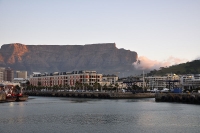
This working harbour, historical site, and shopping development has become one of Cape Town's most visited tourist attractions. The Waterfront offers everything from shopping malls and crafts markets, to live music and a variety of festivals throughout the year. It's also home to more than 70 eateries, ranging from pubs and fast food outlets to five star restaurants. Those who fall in love with the Waterfront will be glad to know that there are several luxury hotels in the area. What's more, travellers can stroll down to the harbour to gaze upon the numerous boats and ships upon the waves. Those who want to experience the thrill of sailing out of the harbour into the open ocean can choose from a variety of boat trips and harbour cruises. Helicopter charters leave from the waterfront as well. These include sunset booze cruises, whale-watching trips, and even a pirate galley that throws themed outings. The Two Oceans Aquarium is an impressive and celebrated institution and houses an impressive array of life from the oceans surrounding the Cape Coast.The aquarium is a must for those travelling in Cape Town with kids, but adults will also find themselves entertained. The V & A Waterfront is situated in a beautiful and central location, all the while under the watchful guard of the iconic Table Mountain.
Website : www.waterfront.co.za
Transport : MyCiti buses service the V & A Waterfront.
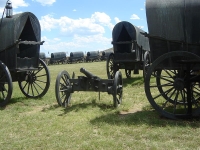
Zululand is the ancestral home of the Zulu people. It is the site of many bloody battles between the British, the Zulus and the Afrikaners during the 19th century, and is best explored as a self-drive adventure. That said, many tours are available from Durban. Almost every town in this part of northern KwaZulu-Natal has a story to tell or an event to commemorate. Tourism offices throughout the region provide maps and guides to help visitors make the most of the culture, history, scenery and wildlife. The landscape varies from plains and rolling hills, to river valleys and lush forests, and it once encompassed the legendary Shake Zulu's kingdom. He clashed with the British and Afrikaners in many epic battles. Eshowe is the Zulu nation's centre. King Shake was born close to the small town, and it was the site of a 10-week siege during the Anglo-Zulu War of 1879. Ladysmith and Dundee are other notable towns. The historic battles of Rourke's Drift, Blood River and Isandlwana took place near them.Some of the battlefields include museums or memorials, while others are just open landscapes where visitors can stroll with guide books and engage their own imaginations.
Website : www.battlefields.kzn.org.za

Travel Guide powered by Word Travels, copyright © 2023 Globe Media Ltd. By its very nature information in this travel guide is subject to change at short notice and travellers are urged to verify information on which they're relying with the relevant authorities. Neither Globe Media Ltd nor Travel Vogue can accept any responsibility for any loss or inconvenience to any person as a result of information contained above.